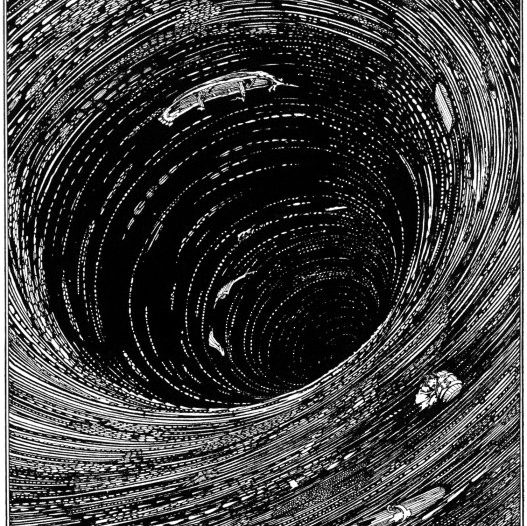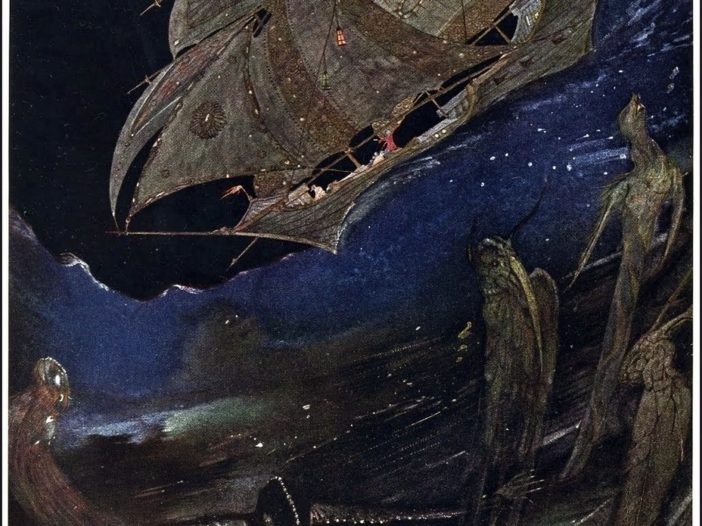"M.S. Found in a Bottle:" A Look at Poe's Skepticism of 19th-Century Science, Part II
Murray Ellison | August 31, 2017
By being unobserved, the unnamed narrator of Poe’s, “M.S. Found in a Bottle” is looking at the relics of science on the ship he is standing on as an outsider. He concludes that much of nineteenth-century science is outdated and largely based on theories of misguided scientists like Francis Bacon and Symmes. He describes the ship as having a “severely simple bow and antiquated stern,” that reminds him of “an unaccountable memory of old foreign chronicles and ages ...
Poe's Works
Poe’s First Published Story about a Shipwreck Foreshadows Eureka: A Prose Poem (Part I of II)
By Murray Ellison
Poe’s first important tale, “MS. Found in a Bottle,” (1833) won the Baltimore Visiter’s first prize for fiction. Poe scholar, Thomas Mabbott calls it a “masterpiece,” contending that “winning the contest set the author on the way to lasting fame” (Tales and Sketches 131). The Visiter wrote that “Poe’s tales are eminently distinguished by a wild, vigorous and poetical imagination, a rich style and a various and curious learning” (Thomas and Jackson 137). “MS.” reveals Poe’s interest in a broad range of science-related topics, including secret writing, conundrums, ...
The Imp of the Poeverse
Which story does Poe scholar Thomas Ollive Mabbott deem as one of Poe's "great stories, although not one of the most popular?" There may be many obscure stories coming to mind; however, this particular story falls under the category of Horror and may give us insight into the development of the psychological thriller sub-genre, as well as allow us to further study the psychology of Poe's mind, if even briefly.
In July of 1845, Poe's horrific tale, "The Imp of the Perverse," was published in Graham's Magazine. According to American critic Benjamin De Casseres, "We've all got that 'imp' in ...
Poe’s “Oval Portrait: and The Picture of Dorian Gray: the Artist, the Subject, and the Audience*
After reading Oscar Wilde’s, The Picture of Dorian Gray (1890), I was struck by how much his theme about the value of art resembled the one found in Poe’s 1842 short fictional work, “The Oval Portrait.” Both stories focus on the relationship between the artist, his subject, and the viewer, or, in the case of literature, the reader. In Poe’s story, the young artist is driven to paint the ultimate portrait of his beautiful new wife. His goal was to produce a masterpiece that would portray a symbol of youth and vitality that would last an eternity. Poe writes, “As a thing of art, nothing ...


